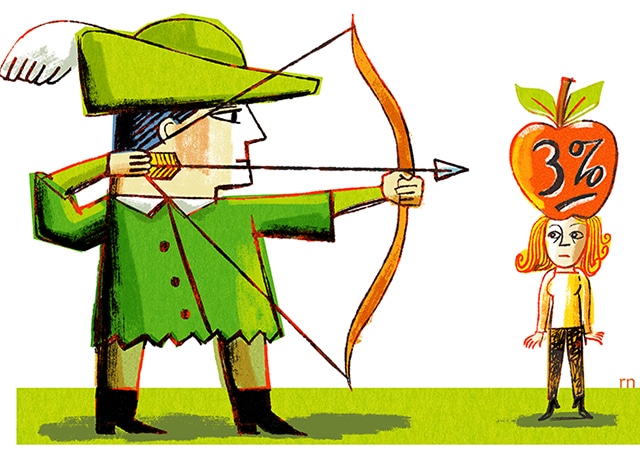Here’s the first thing to know about the new Robinhood credit card that promises 3% cash back on all purchases, without limits: When I asked Vlad Tenev, the company’s CEO, to guarantee that it would stay at that level for 18 months, he would not.
I hope it sticks. It’s incredibly generous as these things go. But cash-back offers from big card issuers like Citibank generally top out at about 2%, and it’s hard to make money even at that level. Charles Schwab gave up on its 2% card in 2010.
The Robinhood Gold Card is the company’s first credit card with its own branding. So what does it think it knows that nobody else does, and what exactly does it hope to accomplish?
There are several ways to make money with credit cards. The first is from fees merchants pay to accept them. The second is from interest when people carry a balance.
Then there are annual fees, which can be several hundred dollars for the most generous cards. Robinhood’s card has no annual fee, although you must pay $5 per month or $50 per year to be part of the company’s gold program, which offers better interest rates and other perks.
Big-spending system-beaters take great delight in moving, say, $100,000 of their annual expenses to a new card; not carrying a balance; earning $3,000 in cash back each year; and declaring themselves victors over foolish companies.
But Tenev aims to draw more than his fair share of people who are relatively new to credit cards and intends to approve nearly every gold member who applies. If those customers borrow, without defaulting on their loans altogether, they could be profitable for the company. Time will tell whether Robinhood has the underwriting skills to make this work.
There’s at least one other way to make money with a card like Robinhood’s, and that’s if you have other wares to peddle.
That 3% cash back must go into a company brokerage account before you can transfer it to, say, your checking account elsewhere. People may just invest the cash rather than withdrawing it.
That pit stop in the brokerage account isn’t the only attempt at creating friction. There’s a nice 5% return that gold customers can earn on cash, and a couple of bonuses for people who move more money to the company. And that money — and the trading people might do with it — is where Robinhood can make more.
Tenev said that his team had examined plenty of potential edge cases, and they did not expect to see an overwhelming number of rewards hounds pulling their winnings from the company.
Some outsiders eyeballing the cash-back offer don’t see how the card can be a moneymaker. They include Joanne Bradford, who was a senior executive at SoFi when it was considering credit card offerings and is now the chief money officer at financial planning startup Domain Money. “Having been someone who ran and runs a funnel for a company, you will try lots of different ways to get new customers,” she said.
So how soon might Robinhood yank the 3% offer when it wants to try other ways to get new customers?
The company doesn’t mince words. “Robinhood may make changes to the Rewards Program (including termination of the Rewards Program) or change the terms of this agreement at any time,” reads the third sentence of its rewards rules.
It’s not fond of you system-beaters, either. The rules go on to say that the company can cancel your card if you engage in “gaming” or if it believes you “may attempt to do so.” There is a waitlist for the card, and the company will roll out offers in the coming months.
Let’s return to that promise that I failed to extract from Tenev. In 2015, I put a similar challenge to a Fidelity executive because I was suspicious of its cash-back card that offered a mere 2%. He accepted, the rewards remained and the card exists to this day.
But Tenev wouldn’t make the pledge. “I appreciate the exercise,” he said, adding that it was not his intent to lower the cash-back rate soon. “But I can’t really renege on the terms and conditions.”
In 2020, Robinhood froze trading in certain stocks during a period of extreme volatility. In 2021, it paid what the Financial Industry Regulatory Authority described as the largest penalty it had ever levied for “significant harm suffered by millions of customers.”
Why should customers trust the company now? Tenev was not defensive.
“We’ve gone through those trials and tribulations and built up scar tissue,” he said. “That will hopefully give customers some confidence. And we’re continuing to roll out products that have undeniable value that customers won’t be able to ignore.”
Indeed, that’s the last thing you should know about the new card. It does have undeniable value. You shouldn’t ignore it.
But that 3%? Robinhood’s going to have to prove that it can make it work.
c.2024 The New York Times Company. This article originally appeared in The New York Times.







